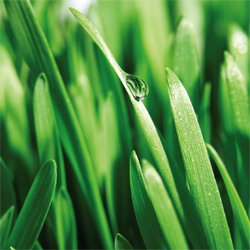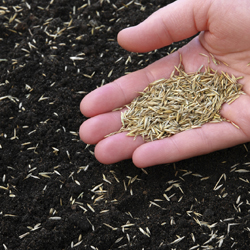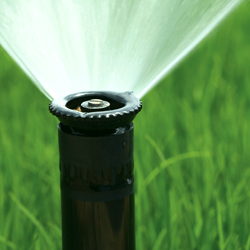Seeding:
If you are planning to seed a new lawn or over-seed an existing one, it is best to seed as early as possible. It is important to get seed germinated and growing before trees begin to leaf out. This is especially true in shaded areas. Keep the area moist at all times until the roots become established, then you can gradually decrease the frequency of watering. The new grass can be mowed when it reaches a height of about three inches.
Rejuvenating a Weak Lawn:
Your lawn cannot live without air, water and nutrients. When a thick layer of thatch builds up, water and fertilizer may run off instead of penetrating the soil. Aerating and dethatching can help rejuvenate a lawn by restoring passageways in the soil to the root. Spring is an excellent time to dethatch cool-season grasses. Thatching rakes can be used for this purpose.
Test your soil to determine the pH. We recommend a small handful of soil taken from a depth of 3 inches. At a pH of 6.8 to 7.0, nutrients are most readily available to turf grasses, and beneficial microorganisms are more active to decompose thatch.
Fertilize your lawn with seed starter fertilizer and top dress with a very thin layer of compost or mushroom soil.
Crabgrass Control:
On established lawns that you are not over-seeding, apply a fertilizer combined with crabgrass control. This should be done in early to mid-April as the flowers are fading from the forsythia. Crabgrass control products may also be applied separate from your lawn fertilizer. Reapplication of crabgrass control should be done again in early to mid June for optimum control. Remember, crabgrass seeds start to germinate when the soil temperature reaches 50 to 58 degrees. Use corn gluten as an organic alternative to chemical control on an established lawn.
On newly seeded lawns and those seeded in late fall or during the winter months, use a starter fertilizer with crabgrass control. You will need to reapply in four weeks because Tupersan is not as effective as Team. Apply a Team product in early to mid June.
Maintaining your lawn at a taller height, 4 inches, throughout the growing season will allow you to control crabgrass without the use of chemicals. Taller grass will shade out the crabgrass seed preventing it from germinating.
Insect Controls:
An early season application of Merit will provide effective white grub control for the growing season. This preventative method tends to give better results than applying insecticides when you notice damage as it may then be too late.









